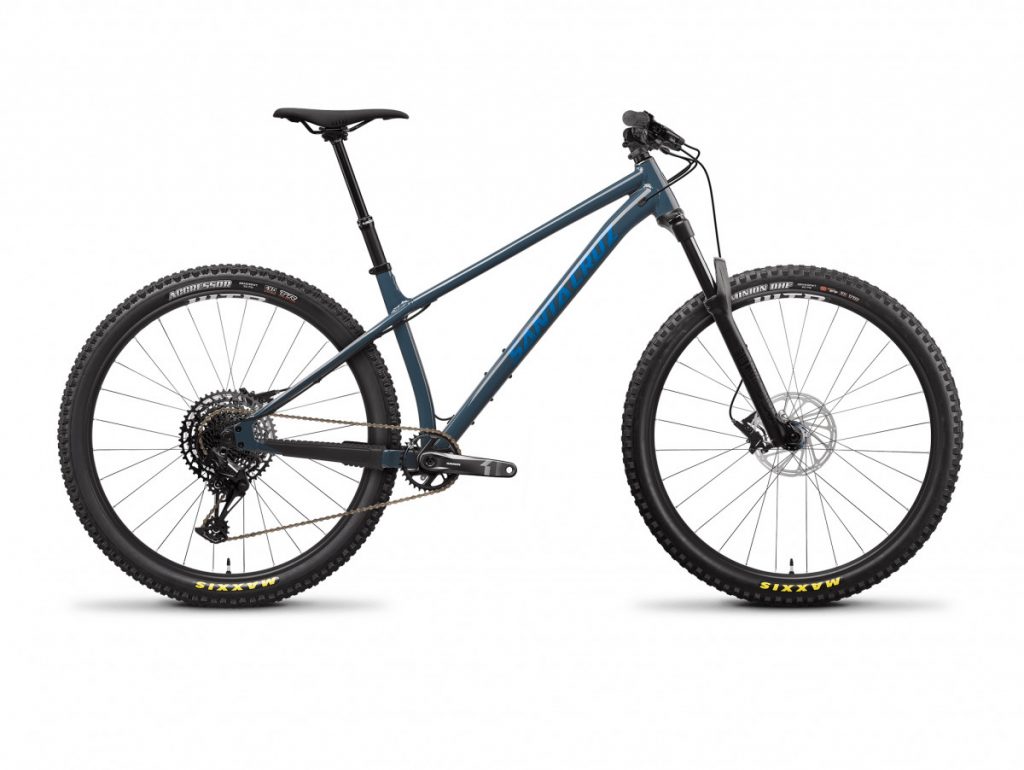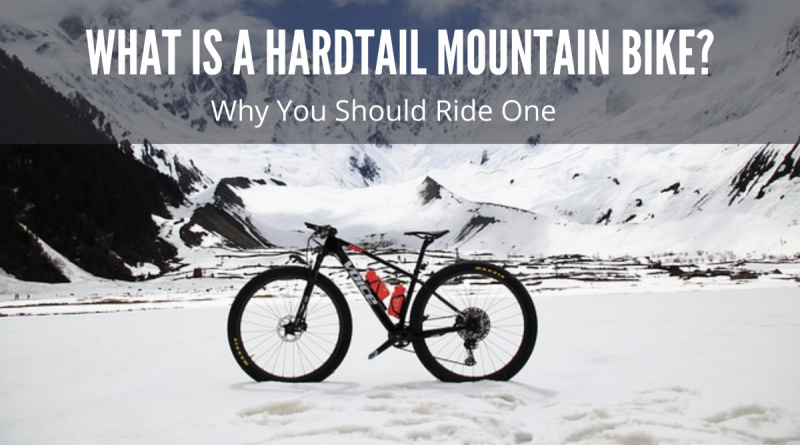What Is A Hardtail Mountain Bike? (Why You Should Ride One)
What Is A Hardtail Mountain Bike? (And Why You Should Ride One!)
The humble hardtail is loved and appreciated by most mountain bikers! Whether you’re looking to buy your first mountain bike, or you’re looking for something to last the test of time, it’s well worth considering a hardtail mountain bike.
Below we’ll discuss what a hardtail bike is and why you should really consider buying one!
- What Is A Hardtail Mountain Bike? (And Why You Should Ride One!)
- What Is A Hardtail Mountain Bike?
- Types of Hardtail Mountain Bike
- What are Hardtail Mountain Bikes Best For?
- Why do People Ride Hardtail Mountain Bikes?
- What Are Hardtails Made From?
- Is A Hardtail Mountain Bike Good For Beginners?
- Is a Hardtail Good For Cross Country Riding?
- Is a Hardtail Good For Trail Riding?
- Is a Hardtail Good For Enduro Riding?
- Is a Hardtail Good For Road Riding?
- Are Hardtails Still Popular?
- How bad Is Riding A Hardtail?
- How Much Should I Spend on A Hardtail?
- Are Hardtails Faster Than Full Suspension?
- So Is a Hardtail Good Enough?
- Final Thoughts
What Is A Hardtail Mountain Bike?
A hardtail mountain bike is a bike with a rigid rear end – which has no rear suspension. They can have either rigid forks at the front or forks with suspension travel on them.
They are a great option for your first bike but are also well worth considering for more experienced riders as well.

Types of Hardtail Mountain Bike
As with full suspension bikes, there are many different bikes for many different styles of riding:
Cross Country Hardtails
Cross-country hardtails are designed for long-distance riding. The bikes generally have narrower tires, high gear ratios, and less front suspension.
As they are built for riding long distances, keeping the weight down is key. With this in mind, saving weight by taking out the rear suspension and riding a hardtail is a good way to keep the bike light. The terrain is also not usually as bumpy or challenging as other disciplines which helps make the bike more suitable.

Trail Hardtails
Trail bikes are all-around bikes that can handle a variety of terrain. Hardtail bikes in this class usually have more front suspension and slacker angles in their geometry.
Hardtail bikes in this category are a good option for people who are trying out a number of different styles of riding and want to decide which is for them before investing the big bucks in a full-suspension bike.

Enduro/Freeride/DH Hardtails
Enduro bikes are built to handle descents but also need to get from place to place between the descents, so need to be able to climb as well. They are built with longer top tubes and longer wheelbases, as long as shorter stems, which help with more aggressive riding.
They have more suspension than either trail bikes or cross country bikes – usually between 140mm and 170mm – and due to the nature of riding they have more in common with downhill bikes.
However, some riders opt for a hardtail for a couple of reasons – they are much easier to fix if you run into problems out on the trails and they are lighter to help with the sections between the descents.

Electric Hardtails

Electric bikes have been growing in popularity over the past few years. The motor helps riders to explore as much terrain as possible. The lack of rear suspension helps to compensate for the extra weight from the battery and motor.
These are a good choice for people who want to travel as far as possible with the least amount of effort!
What are Hardtail Mountain Bikes Best For?
Hardtail bikes can be ridden on a variety of terrains – in fact, they can be ridden on any terrain depending on the rider’s skill. However, due to the lack of suspension, they are best suited for smoother trails. They don’t handle steep, rooty sections or rock gardens with the same degree of ease as a full suspension bike.
Less experienced riders should also consider that a hardtail will make for a tougher ride as you will feel every single bump on the track. It’s a great way to learn, but it’s a good idea to stick to easier, less bumpy tracks to avoid becoming frustrated or having an accident.
Why do People Ride Hardtail Mountain Bikes?
Hardtail mountain bikes have a loyal following among mountain bikers. There are a few reasons for this.
Cost
Hardtail bikes have fewer components and are therefore a lot cheaper than full-suspension bikes. For those on a budget, or unsure about committing large amounts of money to the sport they are a good option.
Versatility
A full-suspension downhill bike is not going to be any good for long climbs. But a hardtail bike can be used for many different styles of riding. It might not be perfect for some, but it can handle them all the same.
Simplicity
With no rear suspension and fewer moving parts, hardtail bikes are simpler to look after and have fewer factors to consider when setting them up.
Reliability
The fact that they have fewer moving parts also means that they are more reliable. There are fewer things that can break, fewer bearings to wear out and repairs are far simpler.
Good for Learning
Hardtails give you a much better feel for the mountain and, although they can be hard work at times, they are great for learning. By starting out on a hardtail, riders will find riding full suspension much easier when they make the transition.
What Are Hardtails Made From?
As with every other kind of mountain bike, hardtails are made from a number of different materials, each with its own advantages and disadvantages.
Steel
If one of the main benefits of hardtail bikes is that they are cheap, then it is easy to see why steel is one of the most popular manufacturing materials for the bikes. They are cheap and also have the benefit of good vibration qualities.
The industry standard for steel bikes is 4130 steel alloy. This is by no means universal, however.
Non-heat treated 631, heat-treated 853, and 953 are all stronger than 4130, with 953 being the strongest.
Another advantage of steel is that if something goes wrong – perhaps in a big crash – it isn’t quite as big a problem as the metal will dent and can be repaired.
Aluminium Alloy
This was the first alternative to the usual steel. It is more lightweight which helps to build a lighter and more agile bike.
It is more expensive than steel, and also more brittle, but a well-looked-after bike can still last for years.
Titanium
Initially, this can look like the best of both worlds – it is as strong as steel but a lot lighter. It can also flex while keeping its shape which makes it a great shock-absorbing material.
However, there always has to be a catch. Titanium is very expensive to extract and difficult to work with which means that the bikes are a lot more expensive. They can even work out being more than double the cost of other bikes. If cost is a serious consideration then perhaps titanium is not the best option.
Titanium bikes can be a good investment, however, as the metal does not get brittle with age.
Carbon
Carbon fiber as a bike material has a number of advantages. The material is stiff in one direction but flexible in the other direction. This means that the bikes can be built in such a way that they are flexible in one direction for shock absorption, while also being stiff in a lateral direction. This means that they have better responsiveness and handling properties.
The bikes are also usually the lightest available while also being sturdy.
Carbon bikes cost significantly more than aluminum bikes, although less than titanium. More and more manufacturers are adopting carbon bikes meaning that the cost is falling all the time, and they are becoming an increasingly good option for riders.
You might be interested to read our post on:
Can You Trust Carbon Fibre Frames? (Explained)
Can You Ride A Mountain Bike On The Road? (Answered)
Is A Hardtail Mountain Bike Good For Beginners?
Hardtail mountain bikes are a great choice for beginners. The lower cost than full suspension bikes means that it doesn’t have to be a huge investment for people just starting out, it also teaches new riders much better bike skills and line choice.
Learning to ride without full suspension gives riders a better feel for the trails and how bikes handle and helps to build a better skill set before moving on to full suspension bikes.
Is a Hardtail Good For Cross Country Riding?
Hardtail bikes can be very good for riding cross country. The lack of suspension makes the bikes much lighter than full-suspension bikes, and if riders are climbing more than descending, and avoiding bumpy, rooty, or rocky terrain then they are a great choice.
Also, for riders travelling long distances the reliability of a hardtail bike can be a positive factor. With less to go wrong, there is less chance of something going wrong when you are miles from home.
Is a Hardtail Good For Trail Riding?
A trail bike needs to be able to handle a greater variety of terrain than a cross-country bike. Hardtails can be good for this if they are set up properly. The bikes generally have more suspension at the front and slacker angles to handle the more aggressive riding.
You might be interested to read our post on:
What Is A Good Trail Bike For Beginners?
XC Bike VS a Trail Bike | Which Is Better?
Is a Hardtail Good For Enduro Riding?
An enduro bike will generally be heavier with more durable components than a cross-country bike. Hardtail bikes can be solid and sturdy which makes them suitable for riding enduro. The geometry is usually even slacker than trail bikes, with longer wheelbases for added stability.
The problem with riding a hardtail for enduro arises when there are more challenging or technical descents where a lack of rear suspension can hamper the rider. Ultimately it all depends on the terrain. A hardtail can be great for climbing, so depending on the nature of the descents they can either be a good or bad choice.
Trail Bike VS Enduro Bike | Which Is Better?
Is a Hardtail Good For Road Riding?
Depending on your perspective, a hardtail can be good or bad for road riding. They are lighter than full suspension bikes, usually with thinner tires and the lack of rear suspension makes pedalling easier. This makes them more suitable for road riding than most other kinds of mountain bikes.
However, looking at it from the perspective of all kinds of bikes, hardtails are obviously not as good as a proper road bike, which is designed specifically for that sort of terrain.
Are Hardtails Still Popular?
Although hardtails have largely disappeared from the racing scene, except for less technical cross-country trails, they are still a popular choice for riders elsewhere.
In fact, with designs improving and becoming more trail bikes, hardtails are actually becoming more popular among riders.
How bad Is Riding A Hardtail?
Riding a hardtail is not bad at all. Many riders like to keep one around even if they have a full-suspension bike because hardtails are great fun to ride on. There is also the fact that riding a hardtail and keeping up with people on full suspension bikes gives great bragging rights after a day on the trails.
The only real downside to hardtails is that they can be increasingly difficult to ride on certain terrain – terrain that is more bumpy, rooty, or rocky.
How Much Should I Spend on A Hardtail?
The price of hardtails varies massively depending on the frame material. As listed above, each one has its own advantages and disadvantages. It can also come down to the components on the bike. Some hardtail frame manufacturers will only sell a frame only, so you will need to build up the rest of the bike.
Steel hardtail prices ($500-2000)
Steel is the cheapest material. Steel hardtails can be bought for as little as $500, making them a great option for those on a budget – although the components will probably not be very good and the bike will not be of the highest quality. Also, remember a high-quality steel frame can cost as much as a good full suspension frame.
Aluminum hardtail price ($600-1400)
Aluminum bikes are usually around the same price as steel bikes, perhaps slightly more expensive. However, it is worth noting that they are not usually as long-lasting.
Titanium hardtail price ($1500-4000)
The premium choice for hardtails. Titanium bikes can cost over $3000 just for the frame only. Complete bikes can be had for $3500, which is still a significant jump in price from other metals.
Carbon hardtail price ($1200-5000)
The price of carbon bikes has been dropping significantly over the past few years as they become more commonplace. A good, fully built carbon hardtail can be had for $1800.
You might be also interested to read: Can You Trust Carbon Fibre Frames? (Explained)
Are Hardtails Faster Than Full Suspension?
This depends on the terrain. On smooth trails, hardtails can be much faster than full-suspension bikes, on rougher, trickier terrain they will be slower due to the lack of rear suspension to keep the bike stable. Ultimately, it comes down to rider ability, less experienced riders will feel more confident on a full-suspension bike which may help them ride faster.
So Is a Hardtail Good Enough?
Yes, a hardtail is good enough for most types of mountain biking. However, a cheap hardtail with low-end components will make riding more challenging. If you want to ride a hardtail ensure it has good suspension forks, hydraulic disk brakes, and at least a mid-range drivetrain.
Final Thoughts
A good hardtail should be part of any mountain biker’s collection of bikes. Mountain biking is all about freedom, and the simplicity of a hardtail digs into the core of why we all love riding bikes. The hardtail reminds us it’s not all about the latest and greatest bike, it’s about a simple bike we can rely on.
You may also like:




